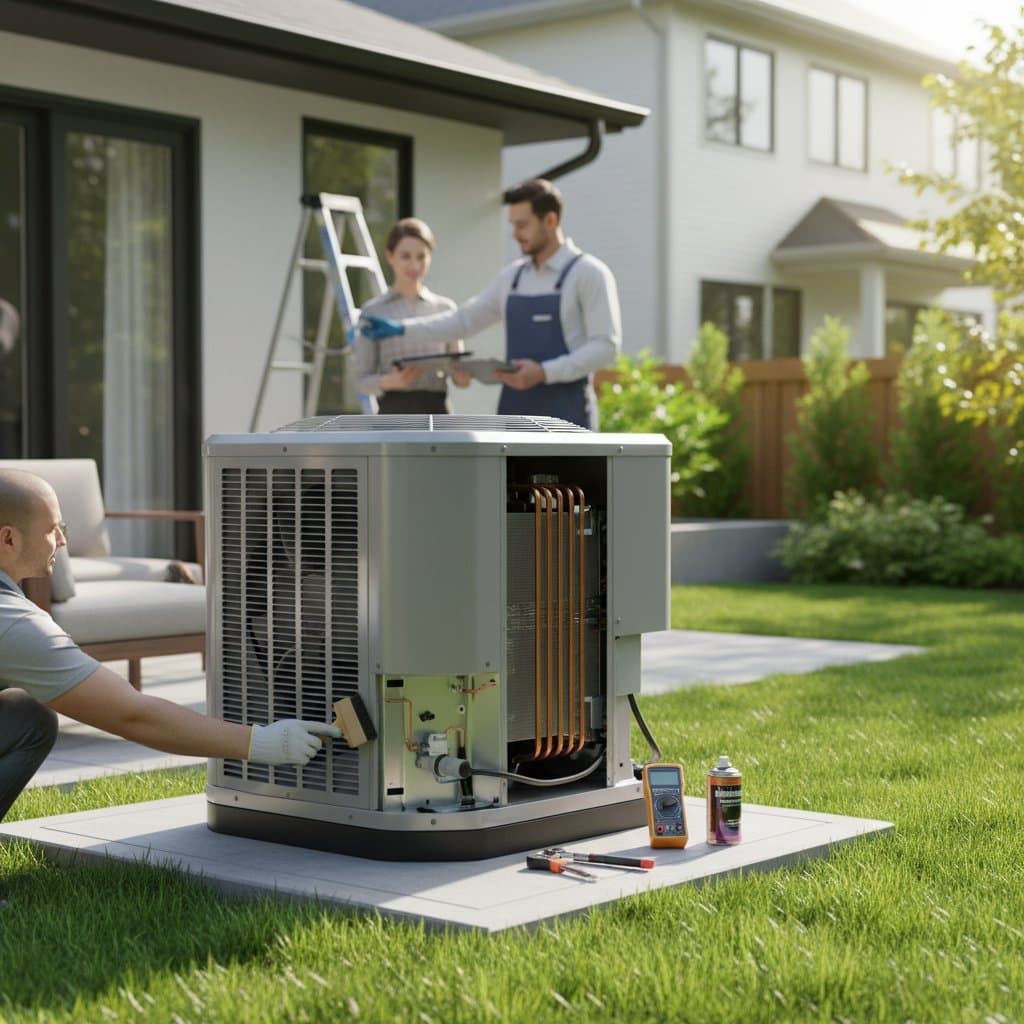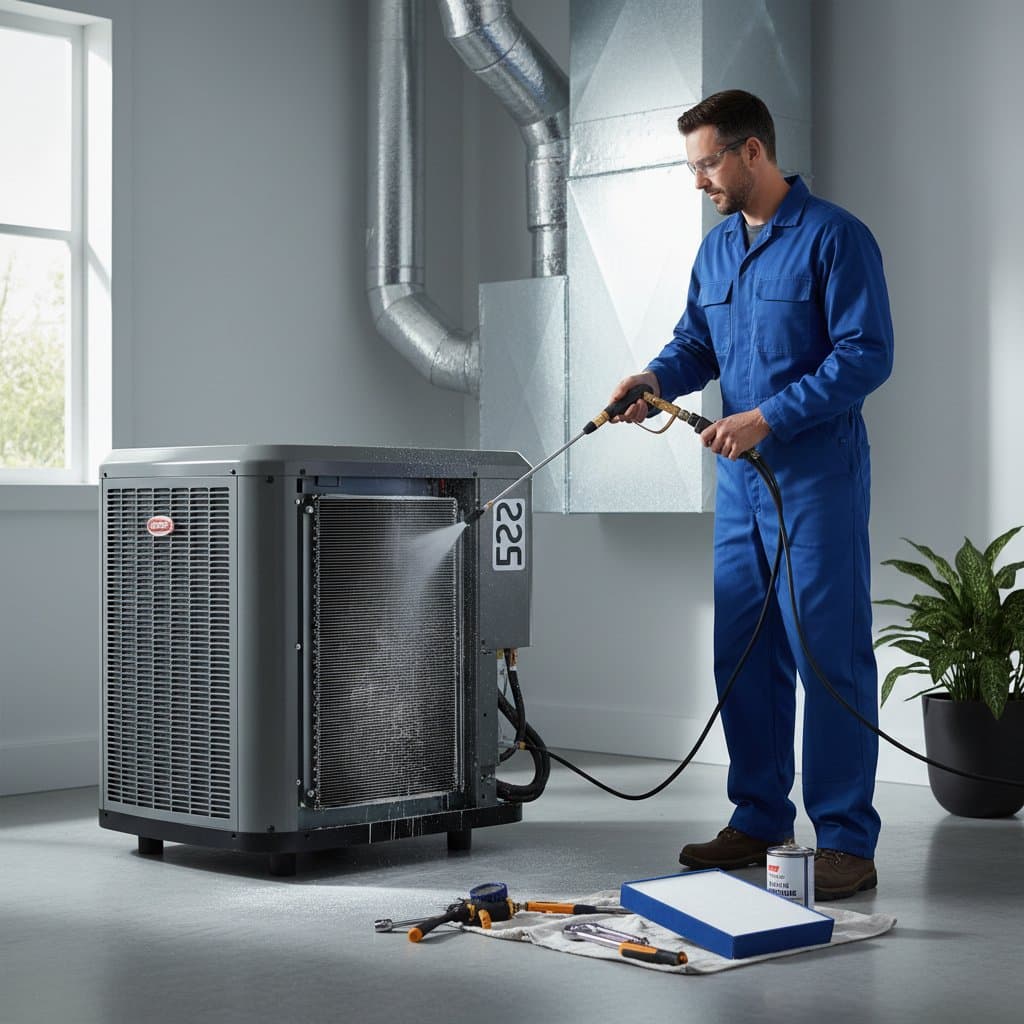The Essential AC Prep That Prevents Summer Breakdowns
When warm weather arrives, the air conditioner emerges as a critical component of home comfort. A sudden failure on a sweltering day disrupts daily life and escalates expenses. Proactive preparation through a structured maintenance plan ensures reliable performance, minimizes repair needs, and sustains efficiency throughout the season.
This guide details key air conditioner preparation steps to avert summer breakdowns. Readers gain insights into DIY tasks and professional services, along with cost comparisons and safety protocols. Implementing these strategies promotes optimal operation and long-term system durability.
Understanding AC Maintenance Costs
Routine air conditioner maintenance involves upfront investments that yield significant savings over time. Costs vary based on the approach selected: self-managed tasks or expert intervention. Both methods support system longevity when executed properly.
DIY AC Maintenance Costs
Individuals handling basic upkeep invest modestly in supplies and tools. Essential items include:
- Air filters: $10 to $40 each, based on dimensions and filtration level
- Coil cleaner: $5 to $20 for foaming solutions
- Fin comb: $10 to $15 for repairing bent condenser fins
- Drain line cleaner or vinegar: Approximately $5
- Basic tools: Screwdrivers, protective gloves, and a shop vacuum, often already available
This method proves economical yet demands careful execution. Inadequate cleaning or improper techniques may impair performance or inflict damage.
Professional AC Tune-Up Costs
Expert tune-ups range from $75 to $200, influenced by regional rates and equipment complexity. Services encompass thorough inspections, cleaning procedures, refrigerant evaluations, and operational assessments. Many providers offer annual plans with benefits like expedited repairs and reduced fees.
Although initial expenses exceed DIY options, professional care frequently prevents expensive malfunctions. Early identification of issues preserves system integrity.
Factors Affecting Service Costs
Multiple elements determine maintenance expenses:
- System age and brand: Vintage models or advanced units necessitate specialized components
- Unit capacity: Larger installations require extended labor and additional refrigerant
- Accessibility: Units in confined spaces, such as attics, elevate service duration
- Maintenance frequency: Consistent servicing diminishes future repair demands
- Seasonal factors: Demand surges in summer months can increase rates
Long-Term Cost Implications of DIY
Initial savings from self-maintenance appeal to many, yet undetected faults pose risks. Issues like refrigerant shortages or capacitor wear evade basic inspections. Such oversights may precipitate compressor breakdowns, among the priciest repairs. Professional evaluations mitigate these hazards effectively.
DIY vs Professional: Making the Right Choice
The decision between self-care and expert assistance hinges on personal expertise, available resources, and time constraints. Integrating both approaches often yields comprehensive protection.
Benefits of DIY Maintenance
- Prompt execution: Address filters or debris clearance as issues arise
- Cost efficiency: Minimal outlay for routine procedures
- System awareness: Frequent handling reveals subtle changes in operation or sound
Drawbacks of DIY Maintenance
- Diagnostic limitations: Advanced problems demand professional instruments
- Error risks: Excessive cleaning or refrigerant mishandling leads to harm
- Warranty concerns: Certain guarantees mandate documented expert servicing
Benefits of Professional Tune-Ups
- Detailed evaluations: Assessments cover airflow, refrigerant, and electrical systems
- Proactive fixes: Identification of deteriorating parts averts failures
- Performance tuning: Adjustments to thermostats and charges enhance efficiency
- Assurance: Confidence in readiness for intense usage
Drawbacks of Professional Service
- Elevated initial fees relative to DIY
- Appointment coordination, particularly in high-demand periods
Skill Level and Safety Considerations
Simple cleaning suits most individuals, provided safety protocols are followed. Electrical components and refrigerants require certified handling due to voltage risks and regulatory standards. Indicators like coil icing, wiring damage, or unusual scents signal the need for immediate professional intervention.
Time Commitment Comparison
DIY sessions typically span one to two hours for comprehensive checks. Professional visits match this duration while incorporating sophisticated diagnostics and metrics.
Your AC Maintenance Questions, Answered
Industry professionals address frequent inquiries to guide effective care.
How Often Should I Replace My Air Filter?
Standard filters warrant replacement every one to three months. In homes with pets, allergy sufferers, or high dust levels, monthly changes optimize performance.
What Happens If I Skip AC Maintenance?
Neglect results in reduced efficiency, elevated energy consumption, and heightened failure probability. Accumulated debris hampers airflow, compelling the unit to overexert.
How Can I Tell If My AC Needs Refrigerant?
Symptoms encompass diminished cooling, hissing noises, or coil frost. Certified technicians use gauges for accurate verification and safe replenishment.
What Does a Professional AC Tune-Up Include?
Procedures involve electrical inspections, coil decontamination, refrigerant analysis, drain clearing, thermostat adjustments, and airflow verification.
Do I Need to Clean Both Indoor and Outdoor Units?
Affirmative. Debris on evaporator and condenser coils disrupts heat transfer and circulation. Regular surface maintenance sustains functionality.
Can I Use a Hose to Clean the Outdoor Condenser?
Yes, with low-pressure water directed outward after power disconnection. This method preserves fin integrity.
How Do I Clear a Clogged Condensate Drain?
Flush with warm water and vinegar solution. Persistent blockages necessitate vacuum extraction or expert assistance.
Are Chemical Coil Cleaners Safe?
Formulated non-acidic products pose minimal risk when applied per guidelines. Protective gear and thorough rinsing are essential.
What Should I Check Before Turning the AC On for the Season?
Examine the outdoor unit for obstructions, refresh filters, inspect for leaks, test the thermostat, and confirm breaker settings.
Do I Need to Cover the Outdoor Unit?
Optional coverage shields against debris during off-seasons. Select permeable materials to avoid condensation.
How Long Should an AC Unit Last with Regular Maintenance?
Expect 10 to 15 years of service with diligent upkeep. Consistent practices prolong operational life.
What Are Signs I Need Professional Help Immediately?
Seek aid for burning odors, sparks, grinding sounds, or warm vent output during operation.
Should I Have Maintenance Done Even If the AC Seems Fine?
Yes. Subtle deteriorations precede noticeable declines. Preemptive checks guarantee dependability.
What Can I Do to Improve Indoor Air Quality While Maintaining My AC?
Install superior filters, sanitize vents, and conduct duct evaluations. Humidity management further aids efficiency.
Can Thermostat Placement Affect AC Performance?
Indeed. Proximity to heat sources or sunlight distorts readings, leading to inconsistent cooling and excess energy use.
How to Decide: Your Step-by-Step Guide
Informed choices begin with evaluating specific circumstances and system status.
Step 1: Assess Your Situation
Observe cooling uniformity, energy trends, noises, and vent output. These observations indicate whether basic cleaning suffices or deeper analysis is required.
Step 2: Evaluate Your Skills and Resources
Household tools enable filter and exterior cleaning for capable individuals. Complex concerns demand expert involvement for safety.
Step 3: Calculate True Costs
Factor in supply expenses, service fees, and downtime repercussions. Seasonal tune-ups typically undercut major repair or replacement outlays.
Step 4: Assess Risk and Efficiency
Inefficient units consume more power and stress parts. Routine interventions curb these threats, especially for aging systems.
Step 5: Make Your Final Decision
Integrate findings on condition, abilities, and finances. Combining DIY routines with yearly professional visits provides robust safeguards.
Preparing for Your AC Project
Thorough readiness streamlines the maintenance process, regardless of method.
Research and Planning
Consult the unit manual for tailored directives, refrigerant type, and filter specifications. Develop a task list to monitor completion.
Gathering Tools and Supplies
Assemble gloves, hoses, cleaners, fin combs, and filters for self-service. Preparedness accelerates the effort.
Site Preparation
Remove foliage and soil from the condenser vicinity. Ensure two feet of clearance on all sides for ventilation.
Timeline and Scheduling
Allocate one to two hours for DIY work, ideally in mild weather. Book professionals early to avoid summer delays.
Budgeting Tips
Set aside funds for annual tune-ups and filter stockpiles. Maintenance contracts often deliver cost predictability and perks.
Sustaining System Performance
Ongoing air conditioner care transcends seasonal chores. It safeguards comfort, trims operational expenses, and prolongs equipment viability. Adopting a blend of personal and professional strategies ensures enduring reliability and efficiency.





